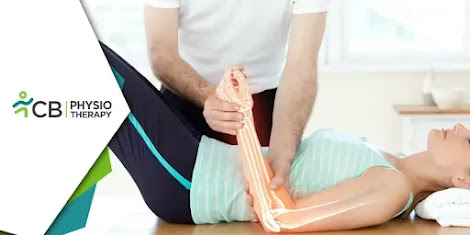In our increasingly digital world, where screens dominate both work and leisure, the toll on our bodies is often underestimated. One of the most common complaints among computer users is hand and wrist pain. Whether you’re professional spending hours at a desk or a student glued to your laptop for assignments, repetitive motions and poor ergonomics can lead to discomfort and even long-term issues. However, all hope is not lost. With the right strategies and physiotherapy techniques, you can alleviate and manage hand and wrist pain effectively.
Understanding the Pain:
Before diving into solutions, it’s crucial to understand why hand and wrist pain occurs in computer users. Prolonged periods of typing, clicking, and using a mouse can strain the muscles and tendons in the hands and wrists. Additionally, poor posture, such as slouching or resting wrists on hard surfaces, exacerbates the problem. Over time, this repetitive strain can lead to conditions like carpal tunnel syndrome, tendonitis, or general discomfort.
1: Ergonomic Optimization:
The first step in combating hand and wrist pain is optimizing your workstation’s ergonomics. This involves adjusting your desk, chair, and computer setup to promote neutral positioning of your hands and wrists. Here are some tips:
2: Chair and Desk Height: Ensure your chair and desk are at the right height so your elbows are at a 90-degree angle when typing. This prevents unnecessary strain on your wrists.
3: Keyboard and Mouse Placement: Position your keyboard and mouse within easy reach, keeping them at the same level. Avoid bending your wrists upwards or sideways while typing or using the mouse.
4: Wrist Support: Invest in a wrist rest or ergonomic keyboard and mousepad with built-in wrist support to maintain a neutral wrist position.
5: Monitor Position: Place your monitor at eye level to prevent neck strain. This encourages you to keep your wrists straight while typing or using the mouse.
Seeking Professional Help:
If hand and wrist pain persists despite ergonomic adjustments and exercises, it may be time to seek professional help from a physiotherapist. A physiotherapist can assess your condition, identify any underlying issues, and develop a personalized treatment plan to alleviate pain and improve function.
1: Physiotherapy Techniques: Physiotherapy offers a range of techniques to manage hand and wrist pain effectively: a: Manual Therapy: Hands-on techniques such as massage, joint mobilizations, and soft tissue manipulation can help reduce pain and improve flexibility in the hands and wrists.
b: Therapeutic Exercises: Physiotherapists prescribe specific exercises to target weak or tight muscles, improve posture, and promote proper biomechanics.
c: Modalities: Modalities such as ultrasound, electrical stimulation, laser therapy, shockwave therapy, and heat therapy may be used to reduce pain, inflammation, and muscle spasms in the hands and wrists.
d: Education and Ergonomic Advice: Physiotherapists educate patients about proper ergonomics and posture to prevent future injuries and promote long-term health.
2: Lifestyle Modifications: In addition to physiotherapy interventions, making lifestyle modifications can further support the management of hand and wrist pain: a: Take Regular Breaks: Schedule short breaks every hour to rest your hands and wrists. Use this time to stretch, walk around, or perform gentle exercises.
3: Stretching and Strengthening Exercises: Incorporating stretching and strengthening exercises into your daily routine can significantly reduce hand and wrist pain. These exercises help to improve flexibility, strengthen muscles, and alleviate tension. Here are some simple exercises you can try: a: Wrist Flexor Stretch: Extend your arm in front of you with your palm facing down. Use your other hand to gently press down on your fingertips until you feel a stretch in your forearm. Hold for 15–30 seconds and repeat on the other side.
b: Wrist Extensor Stretch: Extend your arm in front of you with your palm facing up. Use your other hand to gently press down on your fingertips until you feel a stretch on the underside of your forearm. Hold for 15–30 seconds and repeat on the other side.
c: Wrist Circles: Make a fist with your hand and slowly rotate your wrist in a circular motion, first clockwise and then counterclockwise. Repeat 10–15 times on each wrist.
d: Hand Grips: Squeeze a stress ball or hand gripper for 5–10 seconds, then release. Repeat 10–15 times with each hand to strengthen your hand and forearm muscles.
Hand and wrist pain in computer users is a common problem, but it doesn’t have to be permanent. You can effectively manage and alleviate pain by implementing ergonomic adjustments, performing stretching and strengthening exercises, seeking professional help from a physiotherapist, and making lifestyle modifications. Remember, prioritizing your hand and wrist health is essential for maintaining productivity, comfort, and overall well-being in our digital age.





